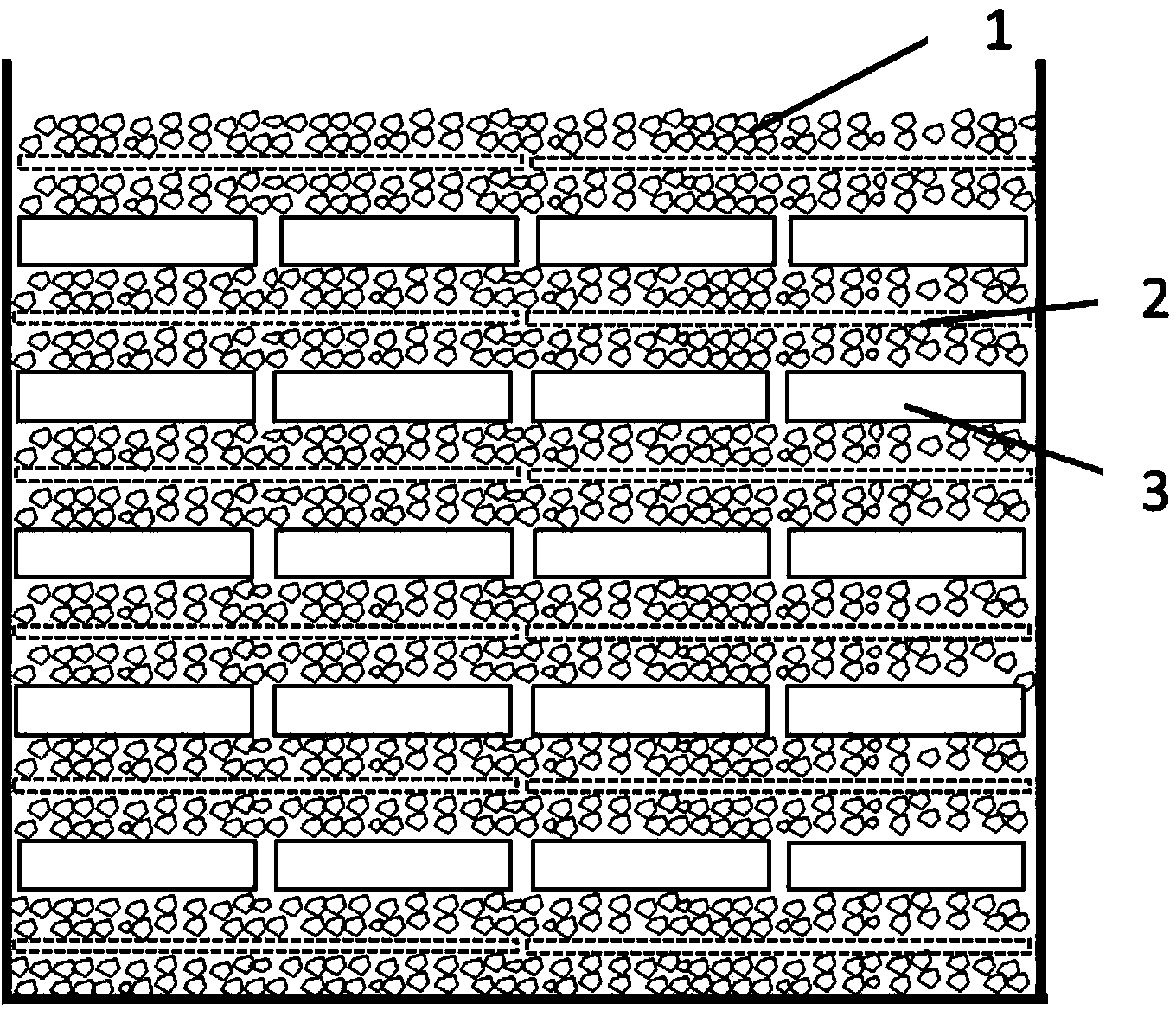Manufacturing method of R-Fe-B sintered magnet
A technology of sintered magnets and manufacturing methods, which is applied in the direction of inductance/transformer/magnet manufacturing, magnetic objects, magnetic materials, etc., can solve the problems of reduced loading, waste of magnets, increased workload, etc. Loading time, effect of reducing spacing
- Summary
- Abstract
- Description
- Claims
- Application Information
AI Technical Summary
Problems solved by technology
Method used
Image
Examples
Embodiment 1
[0031] A vacuum melting furnace is used to smelt the configured raw materials under the protection of inert gas to form scales with a thickness of 0.1-0.5 mm. The metallographic grain boundaries of the R-Fe-B alloy scales are clear. The alloy scales are crushed mechanically, and jet milled after hydrogen explosion until the SMD is 3.4 μm. The magnetic field orientation press molding of 15KOe is used to make a compact, and the density of the compact is 3.95g / cm3. The compact is vacuum sintered in a sintering furnace, first sintered at 1080°C for 330 minutes, and then subjected to aging treatment (aging treatment means that the alloy workpiece is placed at a higher temperature or kept at room temperature after solid solution treatment, cold plastic deformation, or casting and forging. The heat treatment process whose performance, shape, and size change with time), aging at 480°C for 240 minutes to obtain a green body, the green body is multi-wire cut into a magnetic sheet of the...
Embodiment 2
[0040] The prepared raw materials are melted under the protection of an inert gas in a vacuum melting furnace to form scales with a thickness of 0.1-0.5 mm, and the obtained R-Fe-B alloy scales have clear metallographic grain boundaries. After the alloy flakes are HD and air-jet milled, the powder is SMD to 3.2 μm. After the air-jet milling powder is mixed, the magnetic field orientation of 15KOe is used to form a compact, and the compact density is 3.95g / cm3. The compact was vacuum sintered in a sintering furnace at 1090°C for 330min. Then perform aging treatment, aging at 480° C. for 240 minutes to obtain a green body. The green body is multi-wire cut into the magnetic sheet of the final product size, the size of the magnetic sheet: 40mm*30mm*2.4mm, the tolerance: ±0.03mm.
[0041] The surface of the magnetic sheet was washed with acid solution and deionized water, and dried to obtain the treated magnet M3. The composition of M3 is shown in Table 4. In order to prevent the...
Embodiment 3
[0050] The prepared raw materials are melted under the protection of an inert gas in a vacuum melting furnace to form scales with a thickness of 0.1-0.5 mm, and the obtained R-Fe-B alloy scales have clear metallographic grain boundaries. After the alloy flakes are HD and jet milled, the particle size of the jet milled powder obtained is SMD=3.2μm. After air-flow milling and mixing, the magnetic field orientation of 15KOe is used to form a compact, and the density of the compact is 3.95g / cm3. The compact was vacuum sintered in a sintering furnace at 1085°C for 300min. Then, aging treatment was performed, and the green body was obtained by aging at 490° C. for 240 minutes. The green body is multi-wire cut into magnetic sheets of the final product size. Magnet size: 50mm*15mm*6mm, tolerance: ±0.3mm.
[0051] The surface of the magnetic sheet was washed with acid solution and deionized water, and dried to obtain the treated magnet M5. The composition of M5 is shown in Table 6. ...
PUM
| Property | Measurement | Unit |
|---|---|---|
| particle diameter | aaaaa | aaaaa |
| thickness | aaaaa | aaaaa |
| particle diameter | aaaaa | aaaaa |
Abstract
Description
Claims
Application Information
 Login to View More
Login to View More - R&D
- Intellectual Property
- Life Sciences
- Materials
- Tech Scout
- Unparalleled Data Quality
- Higher Quality Content
- 60% Fewer Hallucinations
Browse by: Latest US Patents, China's latest patents, Technical Efficacy Thesaurus, Application Domain, Technology Topic, Popular Technical Reports.
© 2025 PatSnap. All rights reserved.Legal|Privacy policy|Modern Slavery Act Transparency Statement|Sitemap|About US| Contact US: help@patsnap.com


